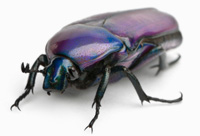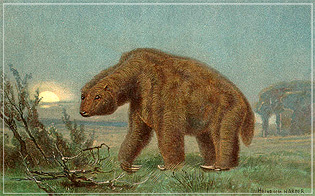Darwin’s story
Charles Darwin – beetles, worms and big ideas
He is one of the best known scientists there has ever been, but why is Charles Darwin so famous?
 Darwin spent his whole life (including much of his childhood) being fascinated by the natural world around him. As an eight year old boy he was already collecting specimens whilst at school and later on he had a craze for beetle-collecting, getting some of his finds published in a book of entomology.
Darwin spent his whole life (including much of his childhood) being fascinated by the natural world around him. As an eight year old boy he was already collecting specimens whilst at school and later on he had a craze for beetle-collecting, getting some of his finds published in a book of entomology.
All aboard…
Still a young man in his early twenties, he took the voyage of a lifetime when he set sail in The Beagle two days after Christmas in 1831, spending the next five years sailing all over the world chiefly exploring the continent of South America and neighbouring island groups such as The Falklands and The Galapagos.
 Intrigued by the small differences between species of birds and animals according to which island they came from, he began to put together his brilliant theory of n
Intrigued by the small differences between species of birds and animals according to which island they came from, he began to put together his brilliant theory of n atural selection.
atural selection.
Despite feeling very sea-sick for much of the time, he kept careful notes of all his zoological and botanical observations and sent many specimens of what he found back to England. He even sampled the plankton in the sea around the ship – only in calm weather though!
Intrigued by the small differences between species of birds and animals according to which island they came from, he began to put together his brilliant theory of natural selection. This fundamental theory, which is still held today, predicts that those organisms (plants and animals) that are really well-suited, or ‘adapted’ to their local environment (salty, dry, cold, wet, dark …) will be the ones to thrive and breed and through breeding (‘reproductive success’) will pass on their genes and particular characteristics (beak shape, colour, speed, intelligence) to the next generation.
 One BIG moment during an on-shore expedition in Patagonia was when Darwin identified the fossil bones of a huge, extinct mammal, called a megatherium (which literally means Giant Beast). Megatherium was a type of giant sloth, which when standing on its hind legs was about 6 metres tall – that’s BIG! It had five sharp claws on each foot and may have lived singly in caves.
One BIG moment during an on-shore expedition in Patagonia was when Darwin identified the fossil bones of a huge, extinct mammal, called a megatherium (which literally means Giant Beast). Megatherium was a type of giant sloth, which when standing on its hind legs was about 6 metres tall – that’s BIG! It had five sharp claws on each foot and may have lived singly in caves.
Darwin brought the huge, fossil bones back to England, where they caused quite a stir!
Back home in England…
Darwin loved to talk about his ideas and excelled at taking opportunities to learn more from everyone he met. As well as discussing his theories with expert naturalists, he talked to farmers and pigeon fanciers as well as relatives, vicars, servants and neighbours. One of his uncles pointed out a patch of ground where some ash had disappeared and suggested that this was the work of earthworms.  This simple observation led to an important new Darwinian theory on the role of earthworms in soil formation.
This simple observation led to an important new Darwinian theory on the role of earthworms in soil formation.
 Darwin did not use the word ‘evolution’ when first describing his theory. Instead he talked about it as ‘descent wit
Darwin did not use the word ‘evolution’ when first describing his theory. Instead he talked about it as ‘descent wit h modification’
h modification’
Darwin did not use the word ‘evolution’ when first describing his theory. Instead he talked about it as ‘descent with modification’ (changes occurring within a species after a few or many generations). He pictured all living things, plants and animals, as being joined up like a tree with branches and twigs. The trunk of the tree represents the simple forms of life (like bacteria) from which everything else has evolved. Darwin understood that humans were no exception to this evolutionary process – they too were one of the twigs on one of the branches in the evolutionary history of life.

Darwin’s theory of evolution had a mixed reaction when it was first published in 1859. The biggest criticisms came from fellow ‘scientists’ (although they were not called scientists in Darwin’s time) who thought that the theory involved too much speculation. Today we have far more evidence to support the theory of evolution, much more than in 1859.
It is wrong to think that the Church was uniformly opposed to Darwin’s theory when it was first published. In fact the earliest written document we have responding to Darwin’s Origin of Species, is a letter written by one of Darwin’s friends, the Revd Charles Kingsley. In the letter he stated that he found Darwin’s book awesome!
Other church leaders (like the Bishop of Oxford, Samuel Wilberforce) were not so sure, but within a decade or so evolution was widely accepted and in many cases actively promoted within the churches of both Britain and America.
What should we believe about the origins of life?
Here are three different ways to explain the origins of life, presented by Biologist and Christian, Dr Denis Alexander
Did you know that scholars were arguing about how to interpret the Creation story in Genesis long before Darwin’s book on evolution was published.
Augustine of Hippo was a Christian bishop who lived about 500 years after Christ’s birth. He said that in his view, the six days in the Genesis story are ‘figurative’ and not literal.